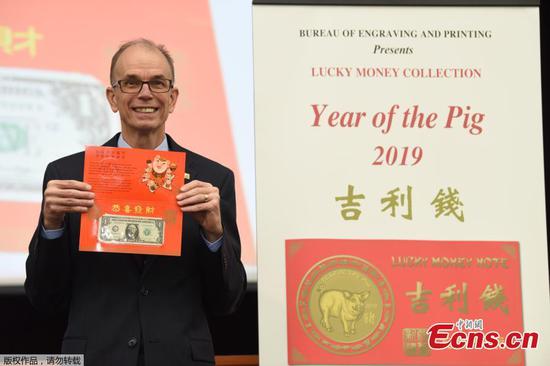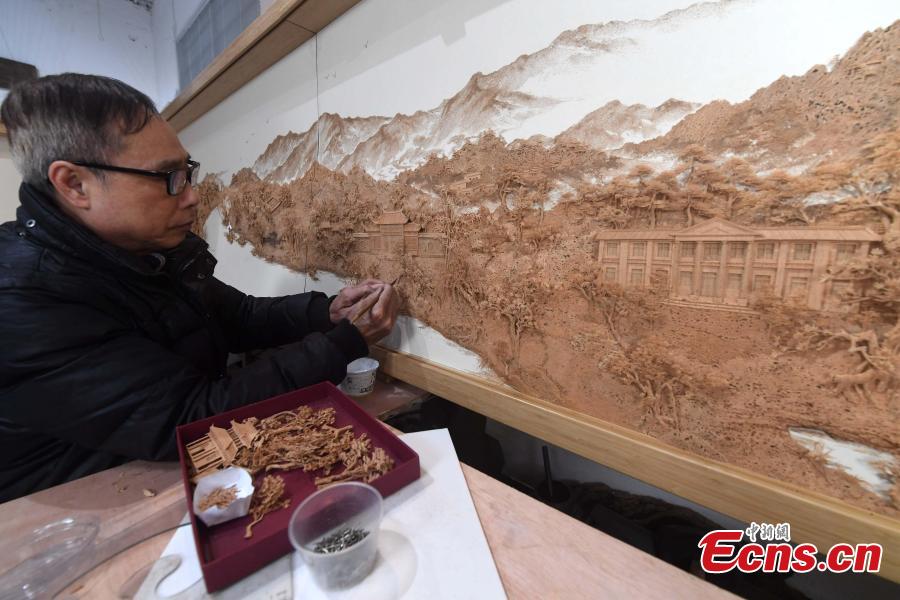
A craftsman carves on bark at a workshop in Fuzhou City, East China's Fujian Province. As an intangible cultural heritage, bark carving is regarded as one of the three treasures of Fujian. Craftsmen can carve elaborate scenes, including pavilions, bridges and landscape features, onto the bark. The craft is in decline today as fewer young people are interested in the time-consuming profession. (Photo: China News Service/Zhang Bin)
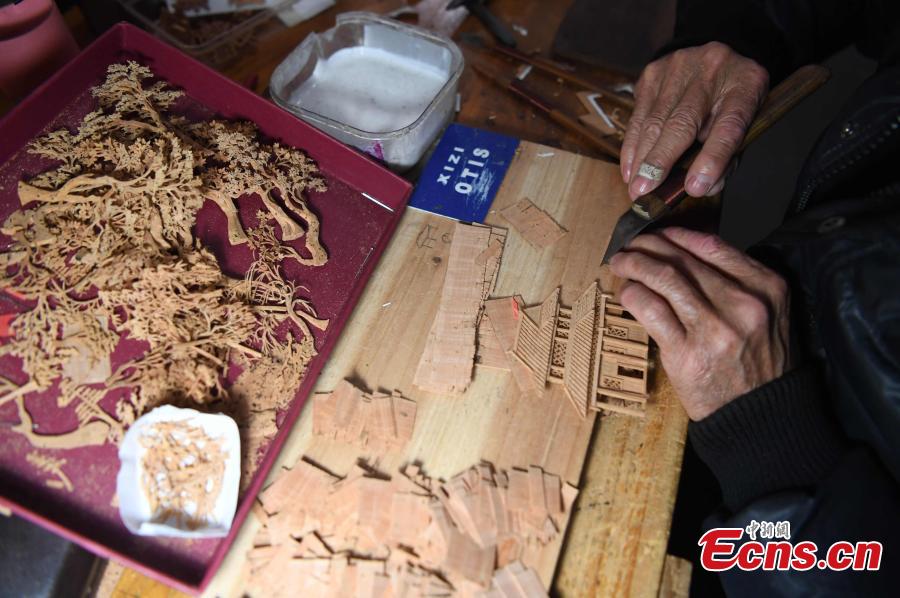
A craftsman carves on bark at a workshop in Fuzhou City, East China's Fujian Province. As an intangible cultural heritage, bark carving is regarded as one of the three treasures of Fujian. Craftsmen can carve elaborate scenes, including pavilions, bridges and landscape features, onto the bark. The craft is in decline today as fewer young people are interested in the time-consuming profession. (Photo: China News Service/Zhang Bin)
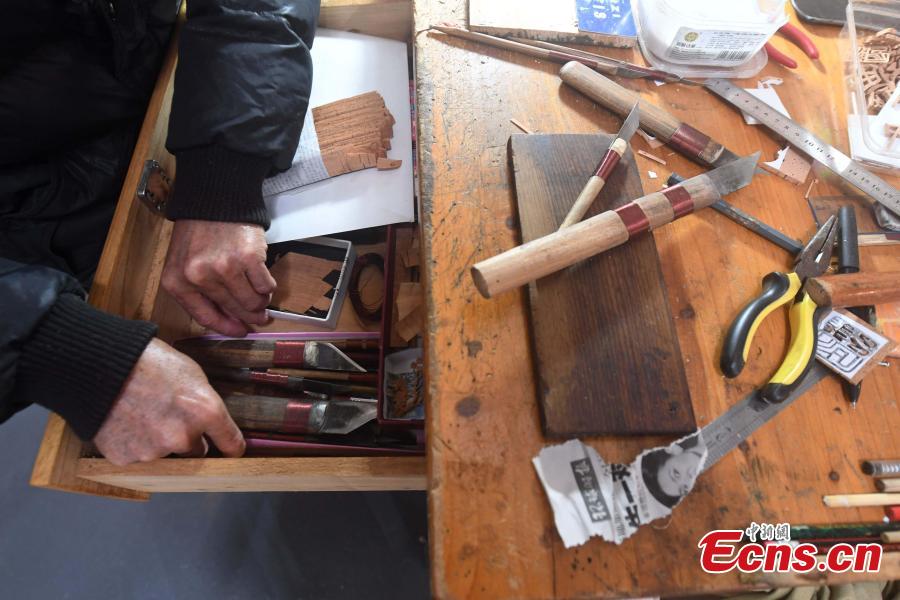
A craftsman carves on bark at a workshop in Fuzhou City, East China's Fujian Province. As an intangible cultural heritage, bark carving is regarded as one of the three treasures of Fujian. Craftsmen can carve elaborate scenes, including pavilions, bridges and landscape features, onto the bark. The craft is in decline today as fewer young people are interested in the time-consuming profession. (Photo: China News Service/Zhang Bin)

Bark sculptures are displayed at a workshop in Fuzhou City, East China’s Fujian Province. As an intangible cultural heritage, bark carving is regarded as one of the three treasures of Fujian. Craftsmen can carve elaborate scenes, including pavilions, bridges and landscape features, onto the bark. The craft is in decline today as fewer young people are interested in the time-consuming profession. (Photo: China News Service/Zhang Bin)
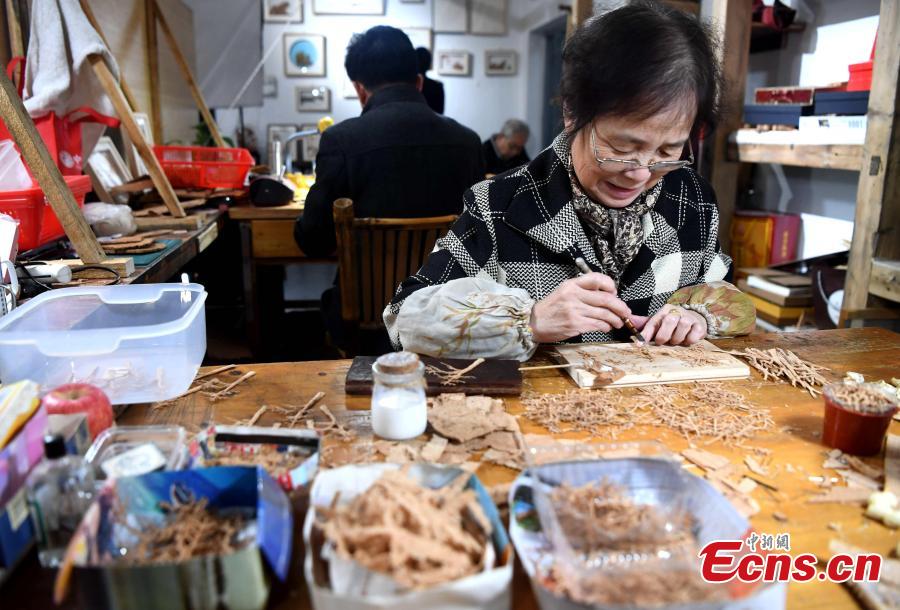
Folk artist Chen Xuerong, who has practiced the craft for 60 years, carves on bark at a workshop in Fuzhou City, East China's Fujian Province. As an intangible cultural heritage, bark carving is regarded as one of the three treasures of Fujian. Craftsmen can carve elaborate scenes, including pavilions, bridges and landscape features, onto the bark. The craft is in decline today as fewer young people are interested in the time-consuming profession. (Photo: China News Service/Zhang Bin)
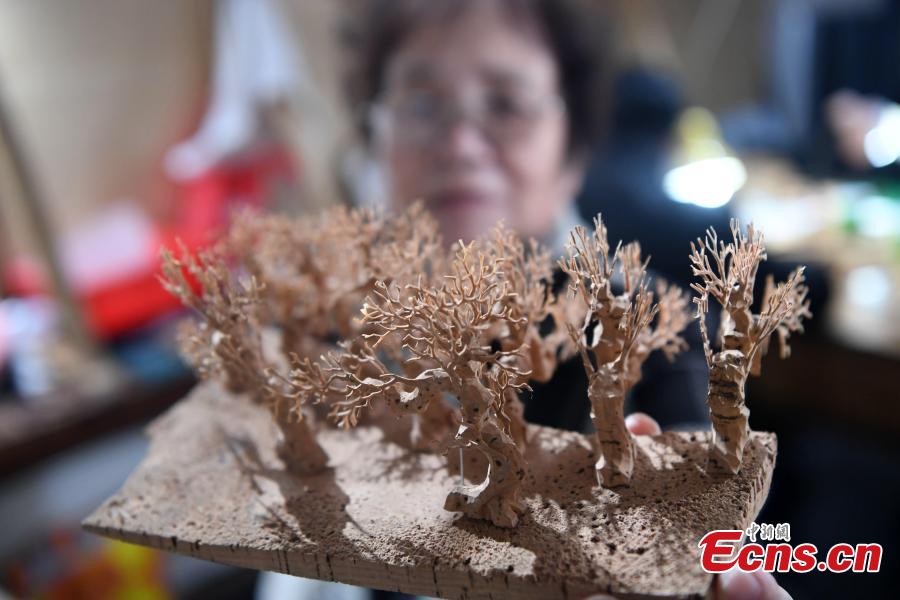
Folk artist Chen Xuerong, who has practiced the craft for 60 years, carves on bark at a workshop in Fuzhou City, East China's Fujian Province. As an intangible cultural heritage, bark carving is regarded as one of the three treasures of Fujian. Craftsmen can carve elaborate scenes, including pavilions, bridges and landscape features, onto the bark. The craft is in decline today as fewer young people are interested in the time-consuming profession. (Photo: China News Service/Zhang Bin)
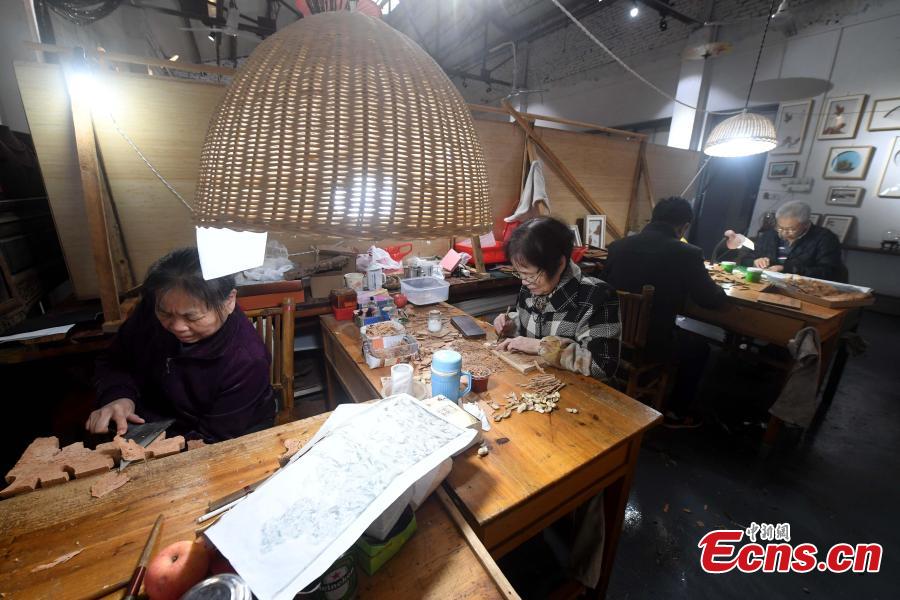
Folk artist Chen Xuerong, who has practiced the craft for 60 years, carves on bark at a workshop in Fuzhou City, East China's Fujian Province. As an intangible cultural heritage, bark carving is regarded as one of the three treasures of Fujian. Craftsmen can carve elaborate scenes, including pavilions, bridges and landscape features, onto the bark. The craft is in decline today as fewer young people are interested in the time-consuming profession. (Photo: China News Service/Zhang Bin)
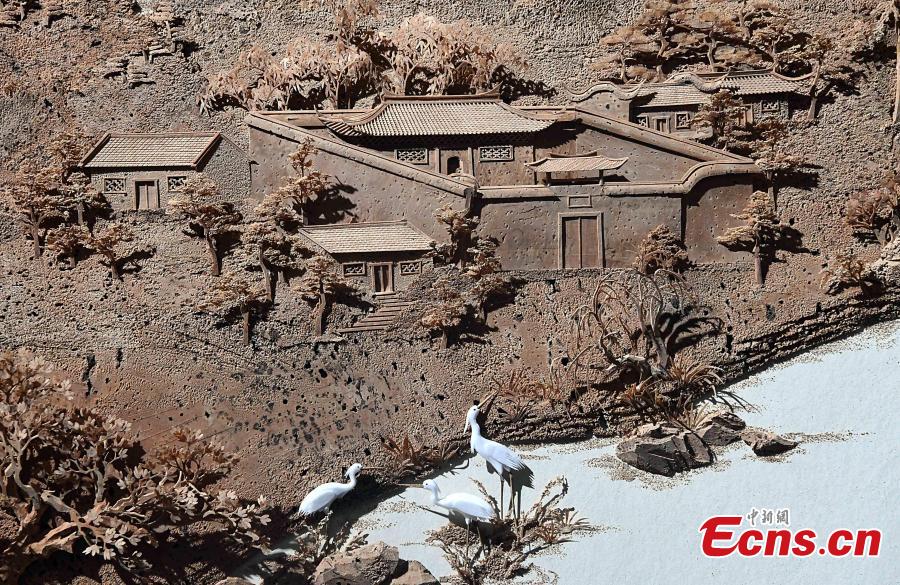
Bark sculptures are displayed at a workshop in Fuzhou City, East China’s Fujian Province. As an intangible cultural heritage, bark carving is regarded as one of the three treasures of Fujian. Craftsmen can carve elaborate scenes, including pavilions, bridges and landscape features, onto the bark. The craft is in decline today as fewer young people are interested in the time-consuming profession. (Photo: China News Service/Zhang Bin)
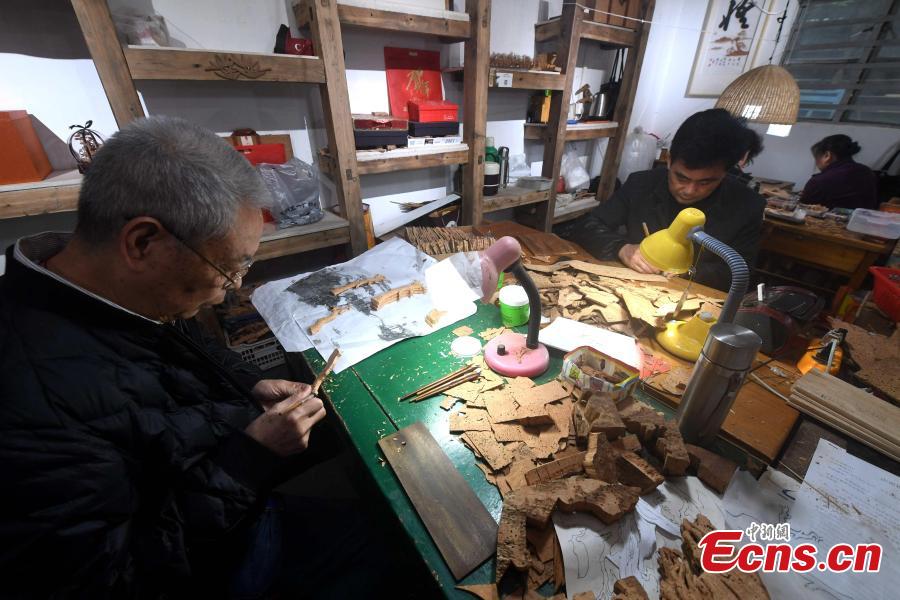
Craftsmen carve on bark at a workshop in Fuzhou City, East China's Fujian Province. As an intangible cultural heritage, bark carving is regarded as one of the three treasures of Fujian. Craftsmen can carve elaborate scenes, including pavilions, bridges and landscape features, onto the bark. The craft is in decline today as fewer young people are interested in the time-consuming profession. (Photo: China News Service/Zhang Bin)













